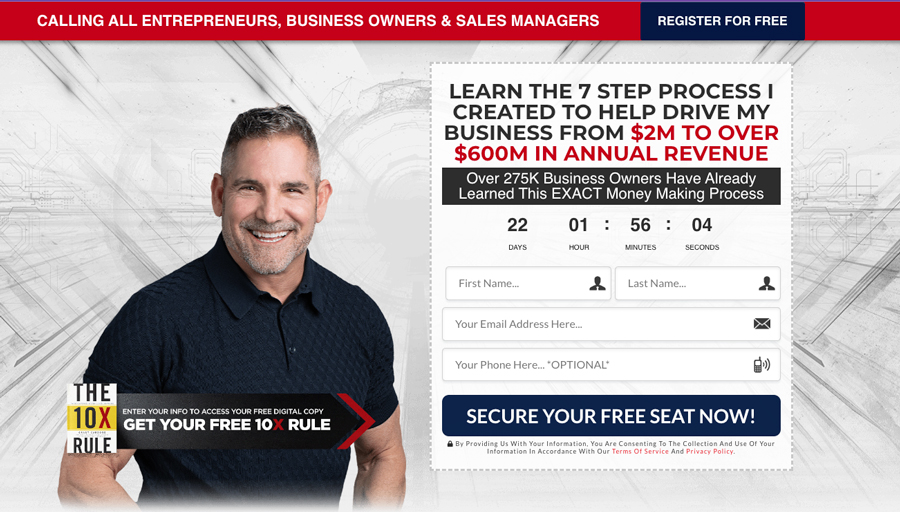Star of Discovery Channel’s “Undercover Billionaire,” Grant Cardone owns and operates seven privately held companies and a private equity real estate firm, Cardone Capital, with a multifamily portfolio of assets under management valued at over $4 billion. He is the Top Crowdfunder in the world, raising over $900 million in equity via social media.
Known internationally as the leading expert on sales, marketing, and scaling businesses, Cardone is a New York Times bestselling author of 11 business books, including “The 10X Rule,” which led to Cardone establishing the 10X Global Movement and the 10X Growth Conference, now the largest business and entrepreneur conference in the world. The online business and sales educational platform he created, Cardone University, serves over 411,000 individuals and Forbes 100 corporate clients throughout the world.
Voted the top Marketing Influencer to watch by Forbes, Cardone uses his massive 15 million plus following to give back via his Grant Cardone Foundation, a non-profit organization dedicated to mentoring underserved, at-risk adolescents in financial literacy, especially those without father figures.


























